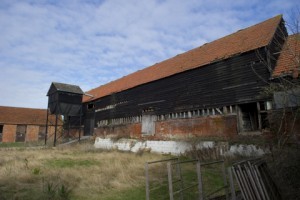The Government have given clear signals that they want to help rural businesses to diversify to stimulate the local economy.
Current conversion rights
The Government have recognised that a major hindrance to re-use of agricultural buildings is the planning system. The easiest way to get conversion work going is through broadening ‘permitted development’. The first stage of this process was completed with the adoption of the Town and Country Planning (General Permitted Development) (Amendment) (England) Order 2013 on the 30th May 2013. This allowed extensions to existing dwellings and business premises with less consultation and interference from the Local Planning Authority (LPA).
There are two elements of the 2013 Order of most interest to landowners. The first is the ability, for a 3 year period up to 30th May 2016, to convert existing offices (as at 30th May 2013) within Use Class B1(a) to dwelling houses. The LPA must issue prior approval that there are no transport and highways impacts, no contamination issues and no flood risk. Listed buildings and ancient monuments will continue to be protected.
The second is an open ended opportunity is to convert agricultural buildings to A1(shops), A2 (financial and professional services), A3 (restaurants), B1 (business), B8 (storage), C1 (hotels) or D2 (assembly & leisure) uses. For changes of up to 150sqm the LPA only have to be notified, for 150 to the 500sqm limit the LPA must give prior approval on issues such as transport, noise, contamination and flooding. This latter conversion opportunity is available to buildings in agricultural use on the 3rd July 2012, or, if built after 3rd July 2012, which have been in agricultural use for 10 years.

Proposed conversion rights
On the 6th August 2013 the Government published a consultation document entitled ‘Greater flexibilities for change of use’. This proposes going much further than the 2013 Order, particularly in relation to the residential re-use of agricultural buildings.
The majority of Local Planning Authorities currently operate a sequential test for the re-use of buildings with preference being given to commercial, community, leisure and holiday home proposals. It is only after these uses have been discounted by a period of test marketing (usually 6 months) that an application for residential use will be considered.
Under the latest proposals an agricultural unit would be permitted to convert existing agricultural buildings to up to 3 separate dwellings, each of no more than 150 sqm. In certain circumstances the agricultural building could be demolished and the footprint used for rebuilding.
Prior approval will still be required on matters such as siting, design, materials, transport and noise impact, contamination and flooding.
In order to prevent new agricultural buildings being erected to replace ‘redundant’ buildings an owner who chooses to create new houses will have his permitted development rights to construct new agricultural buildings suspended for 10 years. It will not be possible to circumvent this rule by putting up new agricultural buildings before exercising the right to create new dwellings.
Commentary
Simon Dixon Smith of Land Partners comments “the Government’s encouragement of enterprise on agricultural units is to be applauded. Whilst this is only a consultation at this stage it seems likely that some further relaxation of Permitted Development Rights will be forthcoming. Farmers and landowners will have to give early thought to the potential that their farm buildings offer and in particular care should be taken in erecting new buildings now under existing rights as this will prejudice the ability to seek residential conversion in the future”. He continued, “The option will remain to apply for full planning permission for any development and our advice is to go down this route until the outcome of the consultation is known”.
Interested parties have until 15th October 2013 to respond to the consultation which is available at https://www.gov.uk/government/uploads/system/uploads/attachment_data/file/226632/Greater_flexibilities_for_change_of_use.pdf




